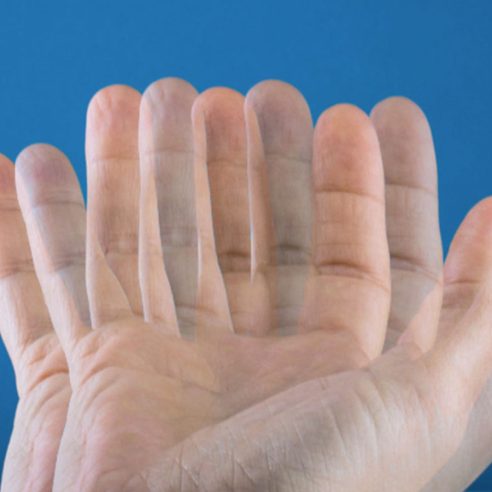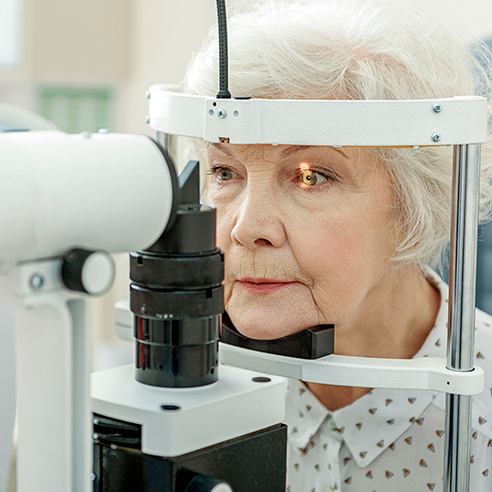
Uveitis: Symptoms, types, treatment
Uveitis is an ophthalmological disorder of the uveal tract, manifested by changes in vision and eye pain. Untreated, the disease can lead to serious complications such as: cataract, retinal detachment, glaucoma, optic neuritis and even loss of vision.
What is uveitis?
About the uvea
The middle layer of the eye is called the uvea. This is a highly vascularized membrane consisting of:
- Iris – the stretched diaphragm in front of the lens that controls the amount of light entering the eye;
- Ciliary body or cyclitis – consisting of vascular structures that handle the secretion of aqueous humor, and ciliary muscle;
- Choroid – the vascular membrane of the eye, located under the retina, which nourishes both the retina and the sclera.
Uveitis involves inflammation of the uveal tract. Depending on the form of the disease, it can affect the retina, sclera or uvea.
How many types of eye uveitis are there?
Uveitis can take different clinical forms, depending on how long it lasts and how severe the symptoms are.
Depending on the duration, eye uveitis can be:
- Acute – develops rapidly, but symptoms decrease in intensity after 3 months;
- Recurrent – involves constant episodes of inflammation every few months;
- Chronic – the disease is present for a longer period of time and returns within 3 months since stopping treatment.
Depending on the affected area, the clinical form may be called:
Anterior uveitis – This form is the most common. It is also known as “iritis” and affects the front of the eye. Most of the time, it’s a mild uveitis, with symptoms coming and going on their own, but there is also a risk that the inflammation may be recurrent or chronic. Anterior uveitis tends to be the most symptomatic – eye pain, sensitivity to light, redness of the eye and decreased visual acuity.
Anterior uveitis is associated with:
- Inflammatory outbreaks in the neighborhood – infections in the ENT area;
- Distant inflammatory outbreaks – urinary or digestive infections;
- Spondyloarthropathies;
- Juvenile idiopathic arthritis;
- Herpes virus infection;
- Systemic autoimmune diseases;
- Injuries.
Intermediate uveitis – Myodesopsia or cystoid macular edema results from extravasation of blood – from the blood vessels into the macula. These can affect the quality of vision and lead to intermediate uveitis. This form is usually painless and occurs in young adults. The disorder manifests itself by filling of the vitreous space with fluid from inside of the eye. Patients experience blurred vision and decreased quality of vision.
Intermediate uveitis is associated with:
- Sarcoidosis;
- Multiple sclerosis.
Posterior uveitis – This is one of the most severe forms of the disease because it occurs in the inner part of the eye and can affect the optic nerve, retina or choroid. As with intermediate uveitis, this type can also create myodesopsia which decreases visual acuity, but can also lead to a recurrent or chronic form of the disease. Other signs of posterior uveitis are: yellowish-white lesions in the retina or choroid (retinitis and choroiditis), cells in the vitreous humor, exudative retinal detachment, retinal vasculitis, or optic papilledema.
Posterior uveitis is associated with:
- Herpes
- Chickenpox;
- Sarcoidosis;
- Lupus;
- Syphilis;
- Tuberculosis.
Panuveitis – This is the most serious form of the disease because it affects the entire uveal tract. When all 3 layers of the eye are inflamed, the risk of loss of vision is extremely high.
Panuveitis is associated with:
- Bacterial or fungal retinitis;
- Viral retinitis;
- Toxoplasmosis;
- Syphilis;
- Lupus;
- Tuberculosis.
What are the risk factors for uveitis?
The most susceptible are people with risk factors – people with other disorders or with certain genetic changes. Some examples would be:
- Brucellosis;
- Tuberculosis;
- Toxoplasmosis;
- Shingles;
- Leptospirosis
- Lyme disease;
- Syphilis;
- AIDS;
- Toxocariasis;
- Herpes simplex;
- Arthritis or rheumatoid arthritis;
- Crohn’s disease;
- Psoriasis;
- Ulcerative colitis;
- Vogt-Koyanagi-Harada disease;
- Multiple sclerosis
- Ankylosing spondylitis.
What causes uveitis?
Although most uveitis is idiopathic, there are several causes that can lead to this disease.
- Eye lesions – injuries or exposure to chemicals;
- Previous surgery;
- Bacterial infections (TB, cat’s claw disease, Lyme disease, syphilis);
- Parasitic infections (toxoplasma, toxocariasis);
- As a side effect during the course of medication;
- Neoplasms (lymphomas);
- Systemic inflammatory diseases (Crohn’s disease, ulcerative colitis);
- Systemic autoimmune diseases (ankylosing spondylitis, Behcet’s disease, sarcoidosis).
What are the symptoms of uveitis?
Uveitis usually occurs in people between the ages of 20 and 60, but it can also affect children. The most common symptoms are:
- Blurred vision;
- Eye pain – a pressure felt around the affected eye;
- Decreased visual acuity;
- Sensitivity to light;
- Inability to see objects in the outer part of the visual field;
- Myodesopsia – seeing “flying flies”;
- Seeing black spots moving across the visual field.
How is the eye uveitis diagnosed?
During an ophthalmological examination, the doctor reviews the patient’s medical history and performs a complex examination. This includes a series of investigations:
- Response to light;
- Blood tests;
- Imaging tests, X-ray, CT, MRI;
- Examination of the front of the eye, using a slit-lamp – to observe the optic disc, retina and its vessels, and to distinguish microscopic inflammatory cells;
- Ophthalmoscopy – to examine the back of the eye;
- Photographing the inside of the eye and retina;
- Tonometry – to measure eye pressure;
- Optical coherence tomography measuring the thickness of the retina and choroid – to determine the degree of inflammation;
- Fluorescein angiography or indocyanine green angiography – to capture an image of the blood vessels inside the eyes and see how inflamed they are;
- Examination of aqueous or vitreous fluid in the eye.
How is uveitis treated?
Depending on the severity of the disease, the treatment regimen may consist of medication or surgery. Classic treatment includes:
- systemic and cycloplegic-mydriatic medication
- or topical corticosteroids.
Infectious uveitis requires antimicrobial therapy and chronic cases require systemic corticosteroids, non-steroidal immunosuppressants, cryotherapy or surgery.
The role of treatment is:
- To reduce inflammation (with steroidal anti-inflammatories);
- To annihilate the infection (with antibiotics or antiparasitic therapy);
- To suppress the immune system (in the case of systemic autoimmune conditions, with specific drugs administered by a rheumatologist).
- Anti-inflammatory medicines;
- Medicines that control spasms;
- Medicines against bacteria and viruses;
- Medicines for the immune system;
- Drops to reduce inflammation;
- Periocular steroid anti-inflammatory injections.
- If uveitis occurs as a side effect of another disease, surgery for that disease (cataract, retinal detachment, etc.) is recommended;
- Vitrectomy – removal of the vitreous by surgery (only in severe cases)
- Implant with medicinal substance. In patients with posterior uveitis, a device may be inserted to release corticosteroids into the eye for 2-3 years.
Herbal remedies for uveitis
There are a few things that can be done at home to alleviate the symptoms of uveitis, but these cannot and should not replace expert opinion and specialist treatment.
- Applying hot or cold compresses – to relieve inflammation and eye pain;
- Wearing sunglasses – for eyes sensitive to light;
- Eating foods rich in vitamin C, E;
- Omega 3 and lutein supplementation;
- Eating foods rich in antioxidants (blueberries, salads, tomatoes, peppers, etc.).
What can you do to prevent uveitis?
- Make sure you have good eye health with proper eye and hand hygiene.
- Don’t postpone treating ophthalmological disorders and don’t hesitate to see a specialist if you have symptoms that affect your visual acuity.
The Dr. Holhoș ophthalmology network awaits you in 5 clinics across the country, with experts and state-of-the-art technology. Make an appointment and take care of your eye health!





































